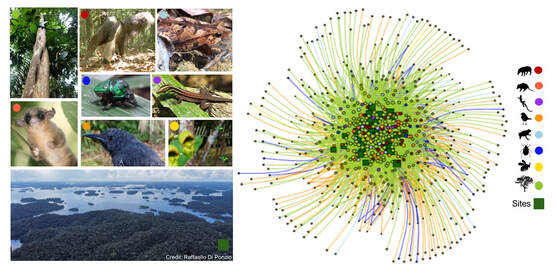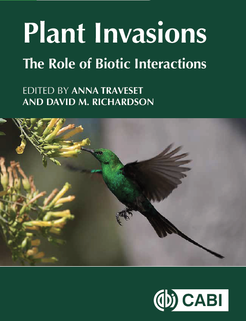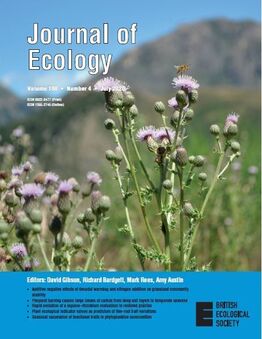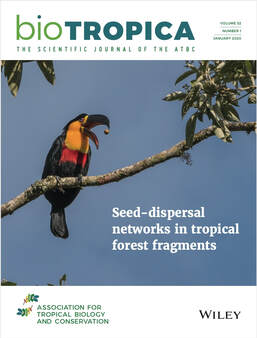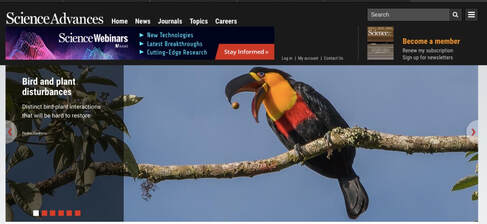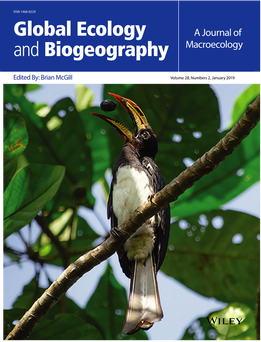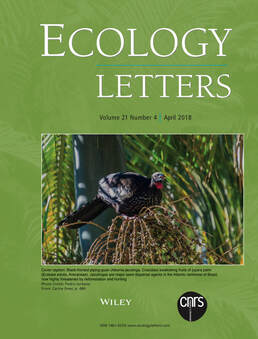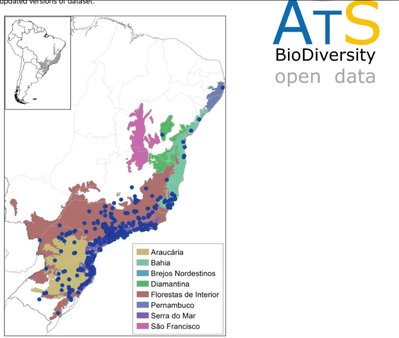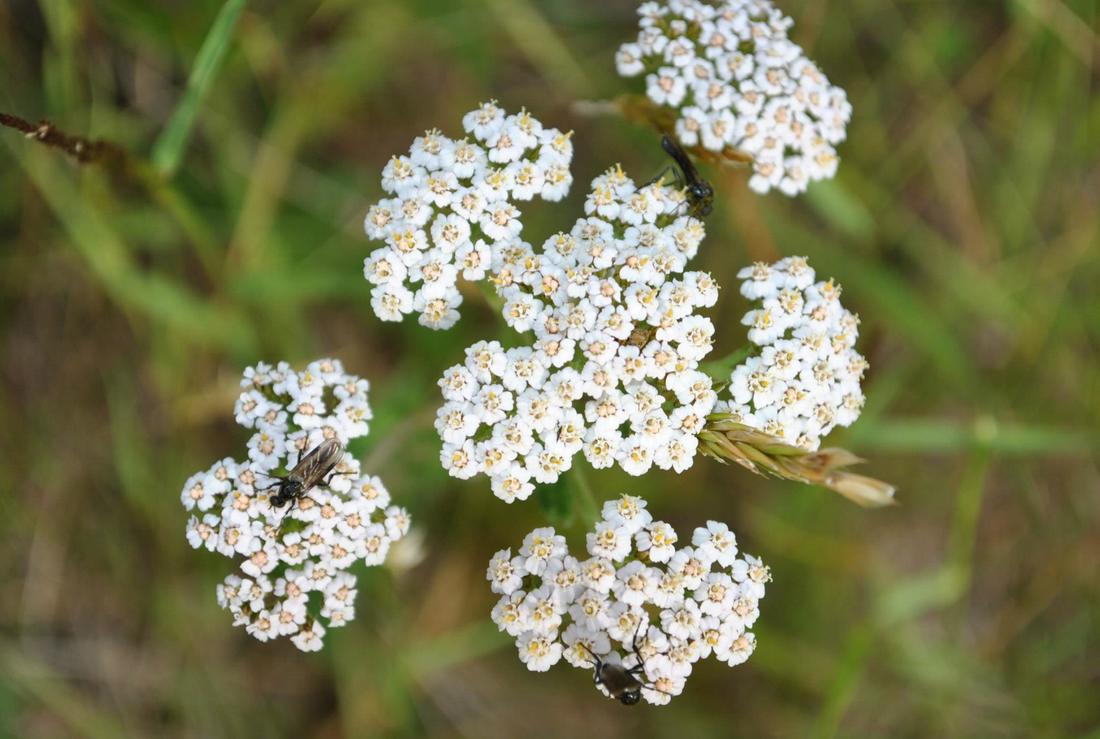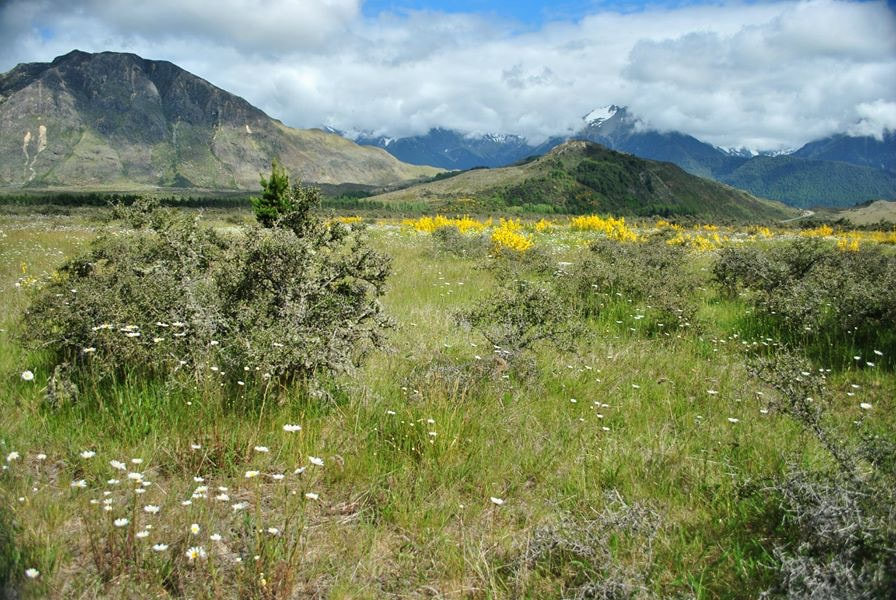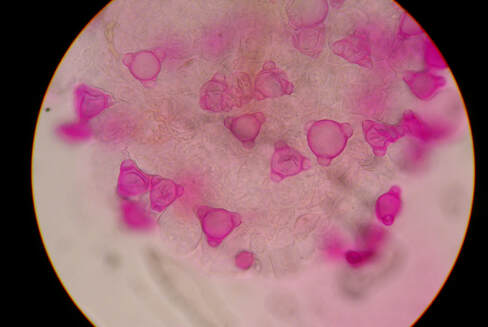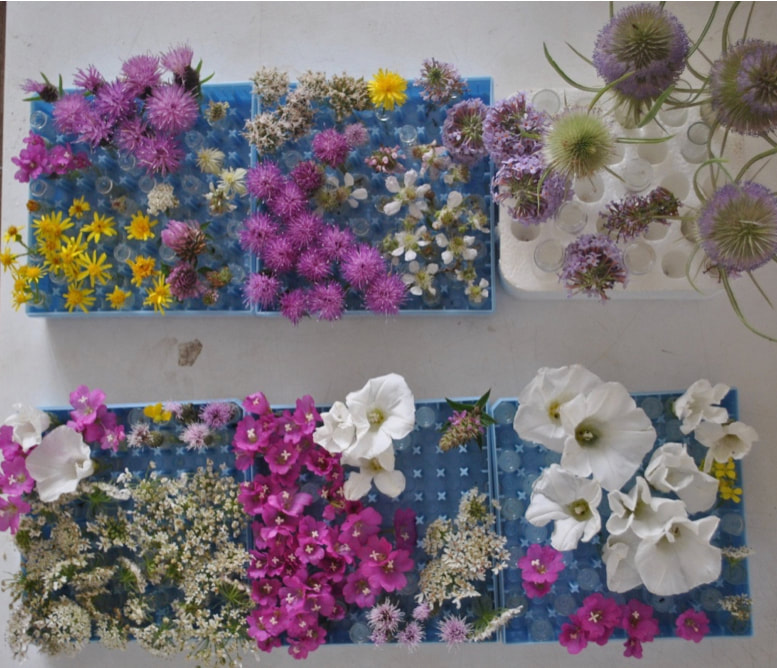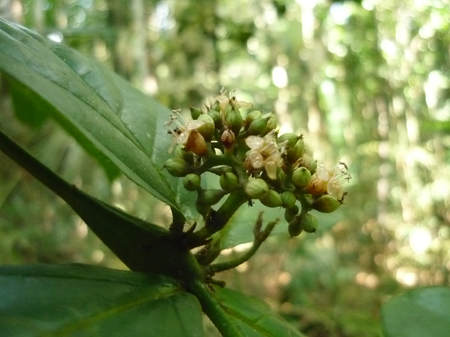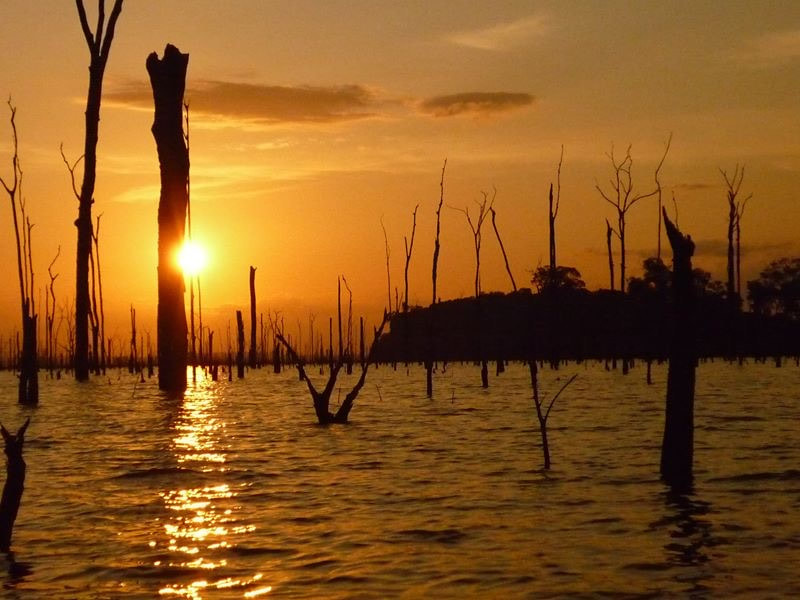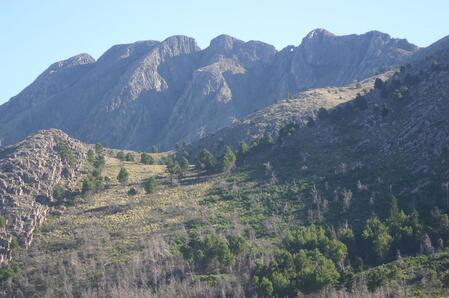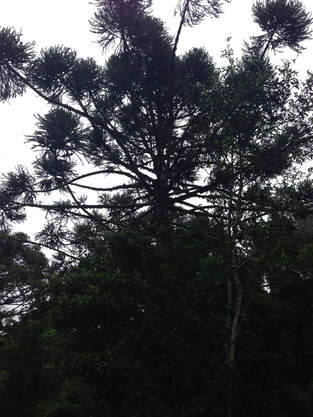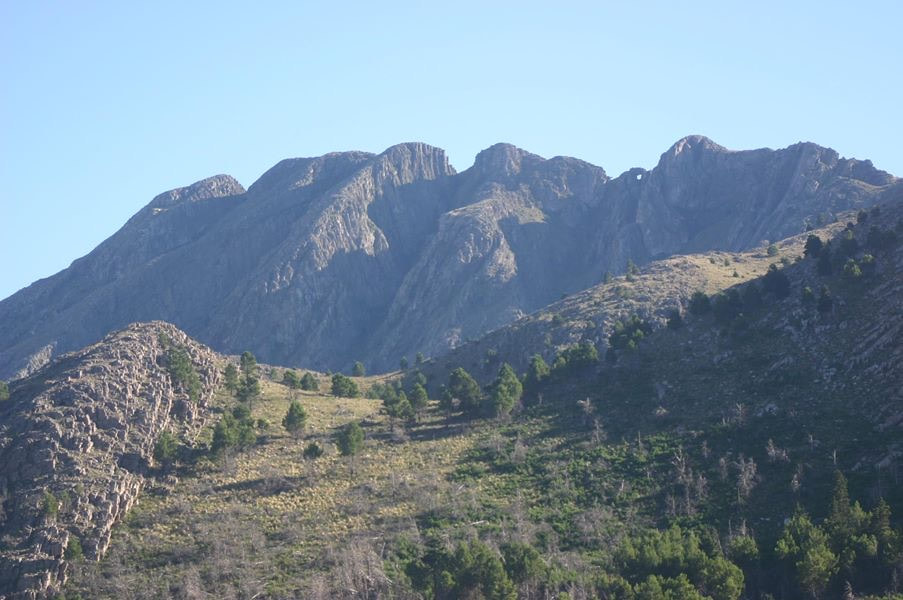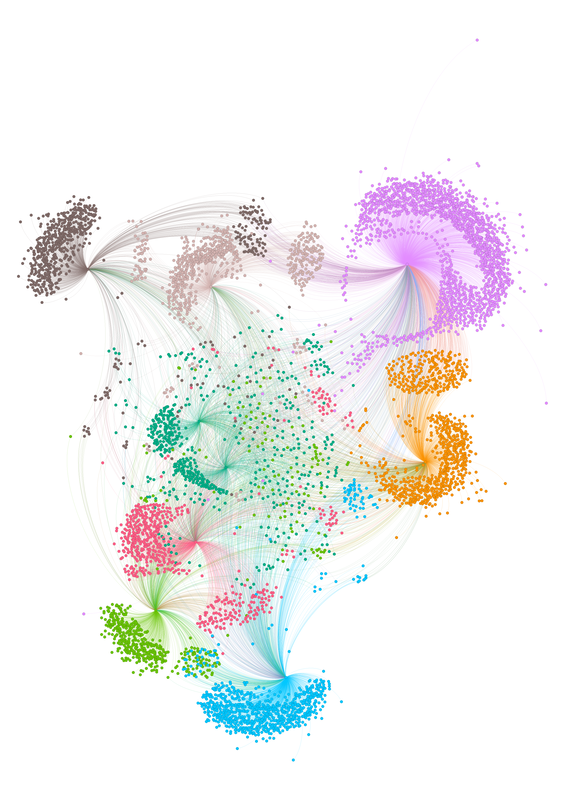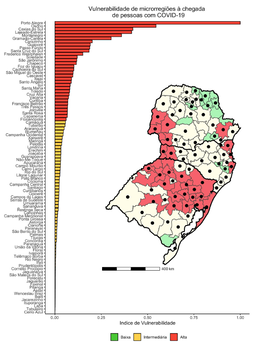Published |
29. Martins LP, et al. (2024). Birds optimize fruit size consumed near their geographic range limits. Science [DOI: 10.1126/science.adj1856]
28. Gonçalves F. et al. (2024). A global map of species at risk of extinction due to natural hazards. Proceedings of the National Academy of Sciences [DOI: https://doi.org/10.1073/pnas.2321068121]
27. Librán-Embid F., I Grass, C Emer, V Alarcón-Segura, H Behling, S Biagioni, C Ganuza, C Herrera-Krings, CA Setyaningsih, T Tscharnke (2024). Flower-bee vcs pollen-bee metanetworks in fragmented landscapes. Proceedings of the Royal Society - B. [DOI: 10.1098/rspb.2023.2604]
28. Gonçalves F. et al. (2024). A global map of species at risk of extinction due to natural hazards. Proceedings of the National Academy of Sciences [DOI: https://doi.org/10.1073/pnas.2321068121]
27. Librán-Embid F., I Grass, C Emer, V Alarcón-Segura, H Behling, S Biagioni, C Ganuza, C Herrera-Krings, CA Setyaningsih, T Tscharnke (2024). Flower-bee vcs pollen-bee metanetworks in fragmented landscapes. Proceedings of the Royal Society - B. [DOI: 10.1098/rspb.2023.2604]
26. Emer C, N Villar, N Melo, V Ziparro, S Nazaré, Mauro Galetti (2024). The interplay between defaunation and phylogenetic diversity affects leaf damage by natural enemies in tropical plants. Journal of Ecology [DOI: 10.1111/1365-2745.14273]. Feature as cover.
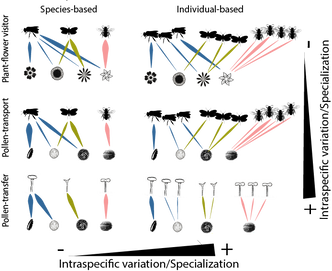
25. Emer C and J Memmott (2023). Intraspecific variation in pollination networks - the role of pollen-transport, pollen-transfer and different levels of biological organization. Perspectives in Ecology and Conservation [DOI: 10.1016/j.pecon.2023.03.003

24. Krainovick P, C Emer, J Mello, AS Lima, AV Caicedo, CJRM Rosårio, JV Campos-Silva. (2023). Transdisciplinarity is crucial to reformulate a sustainable future for the Amazon.
In: Amazon Dialogues.
23. Soares L et al (2023). Neotropical Ornithology: reckoning with historical assumptions, removing systemic barriers, and reimagining the future. Ornithological Applications [DOI: https://doi.org/10.1093/ornithapp/duac046]
22. Camanho LA, CS de Andreazzi, LP Medeiros, I Birkis-Barros, C Emer, C Reigada, PR Guimarães Jr. (2022). Cheating interactions in mutualistic networks. Oikos [DOI: https://doi.org/10.1111/oik.09176]
21. Martins LP et al (2022) Global and regional ecological boundaries drive abrupt changes in avian frugivory interactions. Nature Communications [DOI: 0.1038/s41467-022-34355-w]
20. Palmeirim AF, C Emer, M Benchimol, D Stuck-Tenon, AS Bueno, C Peres (2022). Emerging properties of species-habitat networks in insular fragments. Science Advances [DOI: 10.1126/sciadv.abm0397]
In: Amazon Dialogues.
23. Soares L et al (2023). Neotropical Ornithology: reckoning with historical assumptions, removing systemic barriers, and reimagining the future. Ornithological Applications [DOI: https://doi.org/10.1093/ornithapp/duac046]
22. Camanho LA, CS de Andreazzi, LP Medeiros, I Birkis-Barros, C Emer, C Reigada, PR Guimarães Jr. (2022). Cheating interactions in mutualistic networks. Oikos [DOI: https://doi.org/10.1111/oik.09176]
21. Martins LP et al (2022) Global and regional ecological boundaries drive abrupt changes in avian frugivory interactions. Nature Communications [DOI: 0.1038/s41467-022-34355-w]
20. Palmeirim AF, C Emer, M Benchimol, D Stuck-Tenon, AS Bueno, C Peres (2022). Emerging properties of species-habitat networks in insular fragments. Science Advances [DOI: 10.1126/sciadv.abm0397]
|
Your browser does not support viewing this document. Click here to download the document.
|
19. Galiana N et al. (2022). Ecological network complexity scales with area. Nature Ecology and Evolution [DOI: 10.1038/s41559-021-01644-4].
18. Librán-Embid F, I Grass, C Emer, C Ganuza, T Tscharntke (2021). A plant-pollinator metanetwork along a habitat fragmentation gradient. Ecology Letters [DOi: 10.1111/ele.13892].
17. Menezes ÍM, C Emer, E Cazetta, JC Morante-Filho (2021). Tropical forest loss simplifies seed-dispersal networks in human-modified landscapes. Frontiers in Ecology and Evolution [DOI: 10.3389/fevo.2021.640210].
16. Emer C and S Timóteo (2020). How a network approach has advanced the field of the ecology of plant invasions. In: Plant Invasions - The role of biotic interactions. ed. Traveset, Anna and Richardson, David. CABI Invasive Series, UK.
18. Librán-Embid F, I Grass, C Emer, C Ganuza, T Tscharntke (2021). A plant-pollinator metanetwork along a habitat fragmentation gradient. Ecology Letters [DOi: 10.1111/ele.13892].
17. Menezes ÍM, C Emer, E Cazetta, JC Morante-Filho (2021). Tropical forest loss simplifies seed-dispersal networks in human-modified landscapes. Frontiers in Ecology and Evolution [DOI: 10.3389/fevo.2021.640210].
16. Emer C and S Timóteo (2020). How a network approach has advanced the field of the ecology of plant invasions. In: Plant Invasions - The role of biotic interactions. ed. Traveset, Anna and Richardson, David. CABI Invasive Series, UK.
|
Your browser does not support viewing this document. Click here to download the document.
|
15. Arroyo-Correa B, L Burkle, C Emer (2020). Alien plant and pollinator species configure the seasonal dynamics of mutualistic networks. Journal of Ecology [DOI: 10.1111/1365-2745.13332]. Featured as cover story on JEcol blog. Awarded the Harper Prize for Early Carrer Scientist.
|
Your browser does not support viewing this document. Click here to download the document.
|
14. Emer C, P jordano, MA Pizo, MC Ribeiro, FR da Silva, M Galetti (2020). Seed-dispersal networks in tropical forest fragments: area effects, remnant species and interaction diversity. Biotropica [DOI: https://doi.org/10.1111/btp.12738]. Featured as cover of the volume.
|
Your browser does not support viewing this document. Click here to download the document.
|
13. Emer C, M Galetti, MA Pizo, P Jordano and M Verdú (2019). Defaunation precitates the extinction of evolutionary distinct interactions in the Anthropocene. Science Advances [DOI: 10.1126/sciadv.aav6699]. Featured as highlighted paper on the website.
|
Your browser does not support viewing this document. Click here to download the document.
|
12. Dugger PJ et al. (2018). Seed-dispersal networks are more specialised in the Neotropics than in the Afrotropics. Global Ecology and Biogegraphy [DOI: 10.1111/geb.12833]. Featured as cover of the volume.
|
Your browser does not support viewing this document. Click here to download the document.
|
11. Emer C, M Galetti, MA Pizo, P Guimarães Jr, S Moraes, A Piratteli, P Jordano (2018). Seed-dispersal interactions in fragmented landscapes - a metanetwork approach. Ecology Letters [DOI: 10.1111/ele.12909]. Featured as cover of the volume.
|
Your browser does not support viewing this document. Click here to download the document.
|
10. Bello C, et al. (2017). ATLANTIC-FRUGIVORY: A plant-frugivore interaction dataset for the Atlantic Forest. Ecology [DOI: 10.1002/ecy.1818]
|
Your browser does not support viewing this document. Click here to download the document.
|
9. Emer C, J Memmott, IP Vaughan, D Montoya, J Tylianakis (2016). Species roles in plant-pollinator communities are conserved across native and alien ranges. Diversity and Distributions [DOI: 10.1111/ddi.12458]
| Emer_et_al_2016_DivDist.pdf | |
| File Size: | 1492 kb |
| File Type: | |
8. Emer C, IP Vaughan, S Hiscock, J Memmott (2015). The impact of the invasive alien plant, Impatiens glandulifera, on pollen transfer networks. PlosOne [DOI: 10.1371/journal.pone.0143532]
| Emer_et_al_2015_PlosOne.pdf | |
| File Size: | 579 kb |
| File Type: | |
7. Emer C, EM Venticinque, CR Fonseca (2013). Effects of dam-induced landscape fragmentation on Amazonian ant-plant mutualistic networks. Conservation Biology [DOI: 10.1111/cobi.12045]
| Emer_et_al_2013_ConservBiol.pdf | |
| File Size: | 3217 kb |
| File Type: | |
6. Fonseca C et al. (2013). Invasive alien plants in the Pampas grasslands: a tri-national cooperation challenge. Biological Invasions. [DOI: 10.1007/s10530-013-0406-2]
|
Your browser does not support viewing this document. Click here to download the document.
|
5. Emer C and CR Fonseca (2010). Araucaria Forest conservation: mechanisms providing resistance to invasion by exotic timber trees. Biological Invasions [DOI: 10.1007/s10530-010-9801-0]
|
Your browser does not support viewing this document. Click here to download the document.
|
4. Guadagnanin DL, et al. (2009). Árvores e arbustos exóticos invasores no Pampa: questões ecológicas, culturais e sócio-econômicas de um desafio crescente In: Campos Sulinos: Conservação e uso sustentável da biodiversidade.1 ed. Brasília: Ministério do Meio Ambiente.
|
Your browser does not support viewing this document. Click here to download the document.
|
Pre-print
4. Zahra S et al. (2024). Ant-plant specialisation depends on network type, but not disturbance, elevation, or latitude. Authorea [10.22541/au.171500704.45910925/v1].
3. Correa DT et al. (2020). Multilevel community assembly of the tadpole gut microbiome. BioRxiv [DOI 10.1101/2020.07.05.188698]
3. Correa DT et al. (2020). Multilevel community assembly of the tadpole gut microbiome. BioRxiv [DOI 10.1101/2020.07.05.188698]
|
Your browser does not support viewing this document. Click here to download the document.
|
2. Gaiarsa MP, et al (2020). Vulnerabilidade estrutural dos hospitais, cemitérios e crematórios da cidade de São Paulo à CVID-19. Scielo [DOI: 10.1590/SciELOPreprints.381]
1. Emer C, et al (2020). Vulnerability of the micro-regions of the South of Brazil to the new coronavirus (SARS-CoV-2) pandemic. Scielo [DOI: 10.1590/SciELOPreprints.128]
|
Your browser does not support viewing this document. Click here to download the document.
|
Submitted
i. Rother D, C Emer, et al. Unraveling plant species flux through restored forests in fragmented landscape: insights from ecological network approach. Journal of Applied Ecology, major reviews.
ii. Zahara S, et al. Ant-plant specialisation depends on network type, but not disturbance, elevation, or latitude. Ecography, in review.
iii. Brodie J, et al. The implications of defaunation for terrestrial ecosystem carbon balance. Conservation Biology, in review.
iv. Rossi, LC, C Emer et al. Fruit-frugivore interactions mediated by fires in Amazonian forests. Oikos, minor reviews.
ii. Zahara S, et al. Ant-plant specialisation depends on network type, but not disturbance, elevation, or latitude. Ecography, in review.
iii. Brodie J, et al. The implications of defaunation for terrestrial ecosystem carbon balance. Conservation Biology, in review.
iv. Rossi, LC, C Emer et al. Fruit-frugivore interactions mediated by fires in Amazonian forests. Oikos, minor reviews.
In prep.
a. Gonçalves F, C Emer et al. Pollen amino acids shaping the structure of bat-flower networks in the Pantanal wetland.
b. Missano, R. MA Pizo, M Galetti, C Emer. Sampling methodologies to build avian frugivory networks.
c. Gomes SG, et al. Habitat-loss modulates pollinator-mediated faciliation and competition among plants.
d. Miguel F, et al. Species loss and the meso-scale structure of mutualistic networks.
e. Emer C, M Lurgi, S Timóteo, JV Campos-Silva, S Pilosof. Optimal management strategies in an Amazonian fishing system rely on population connectivy.
f. Rossi L, P Jordano, P Vivallva, A Scabin, E Dalcin, C Emer. A socioecological frugivory metanetwork of açaí extractivism.
b. Missano, R. MA Pizo, M Galetti, C Emer. Sampling methodologies to build avian frugivory networks.
c. Gomes SG, et al. Habitat-loss modulates pollinator-mediated faciliation and competition among plants.
d. Miguel F, et al. Species loss and the meso-scale structure of mutualistic networks.
e. Emer C, M Lurgi, S Timóteo, JV Campos-Silva, S Pilosof. Optimal management strategies in an Amazonian fishing system rely on population connectivy.
f. Rossi L, P Jordano, P Vivallva, A Scabin, E Dalcin, C Emer. A socioecological frugivory metanetwork of açaí extractivism.



